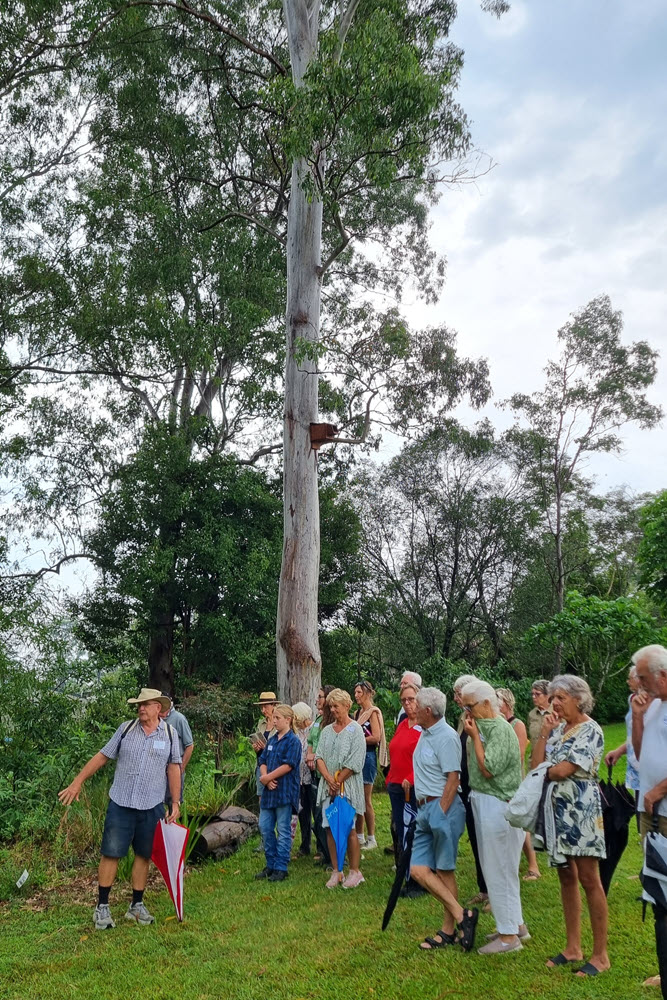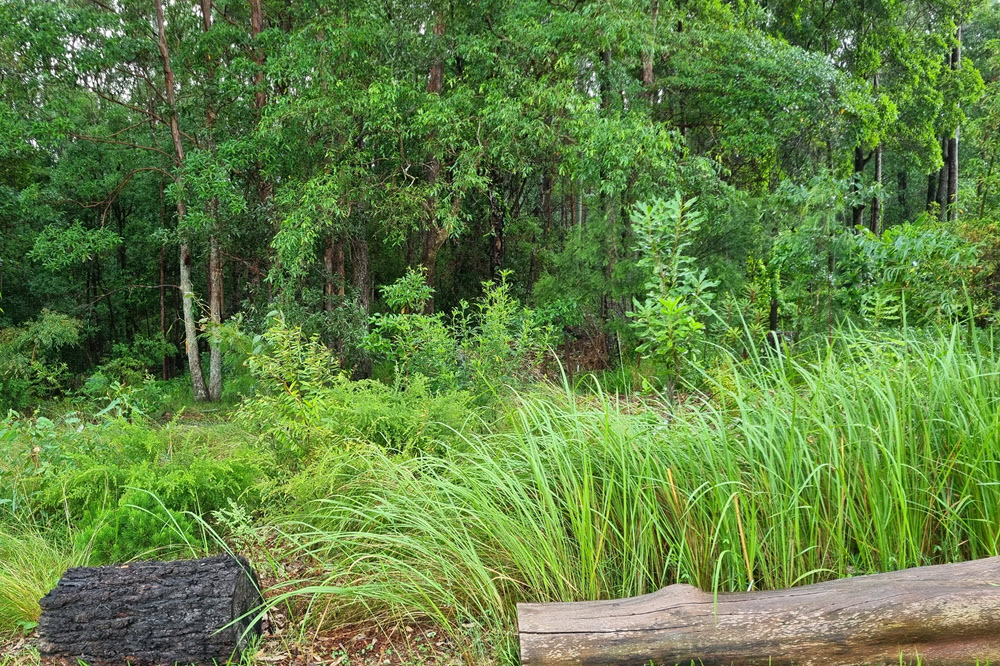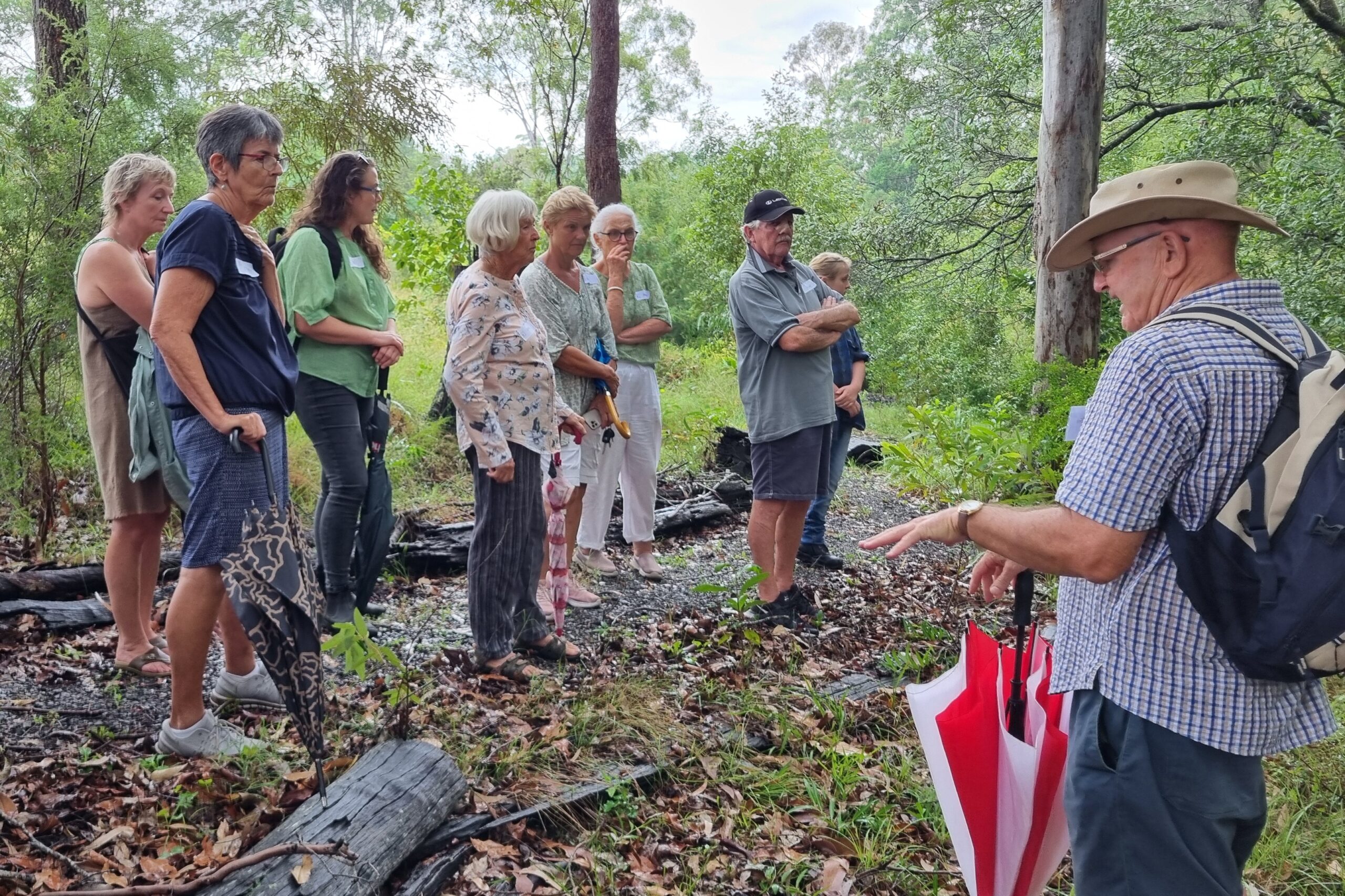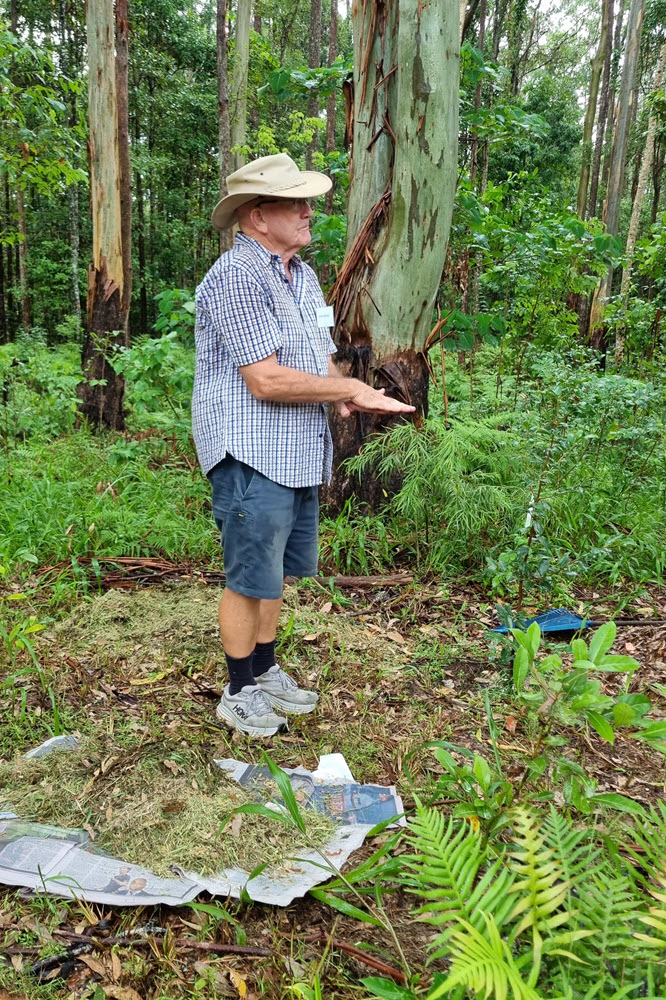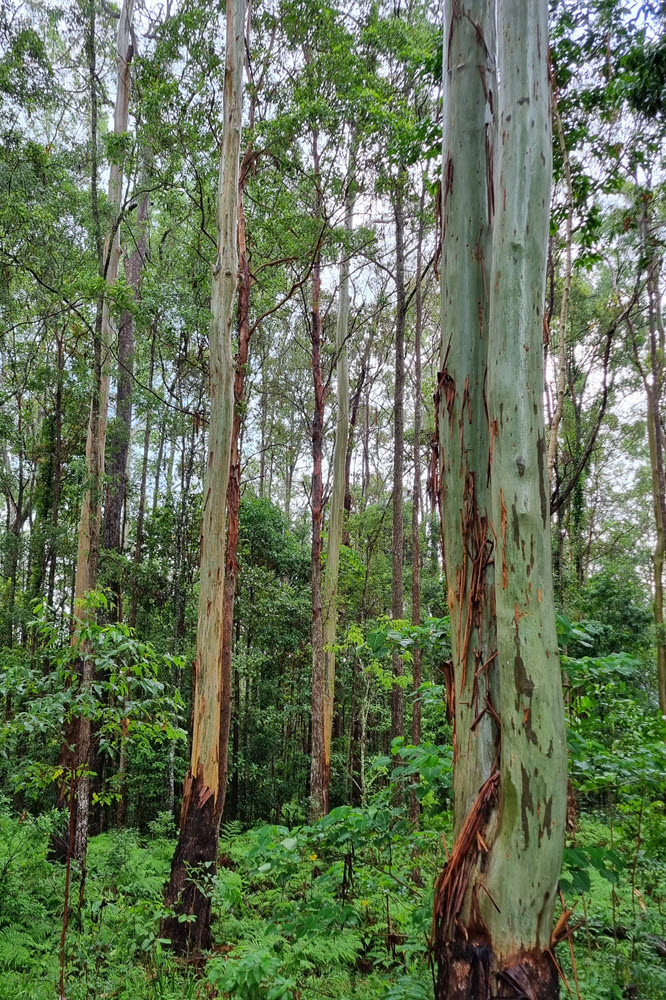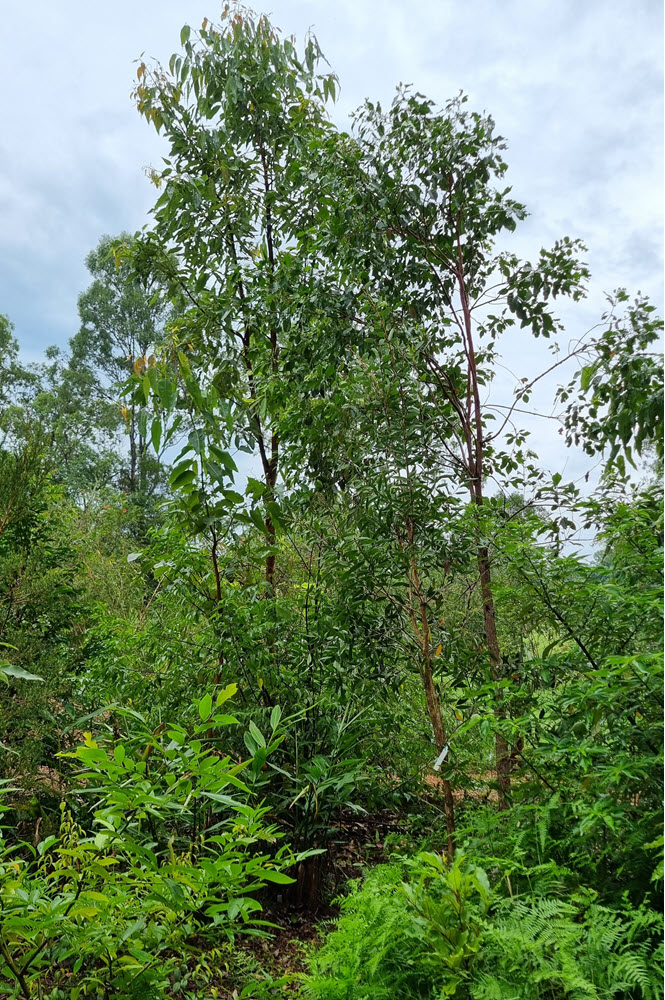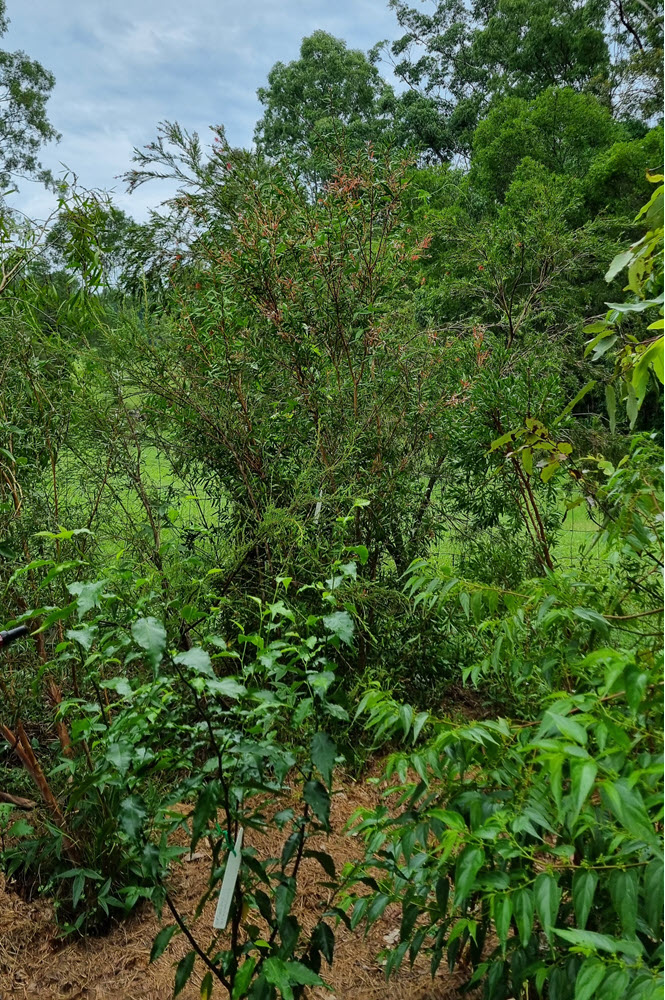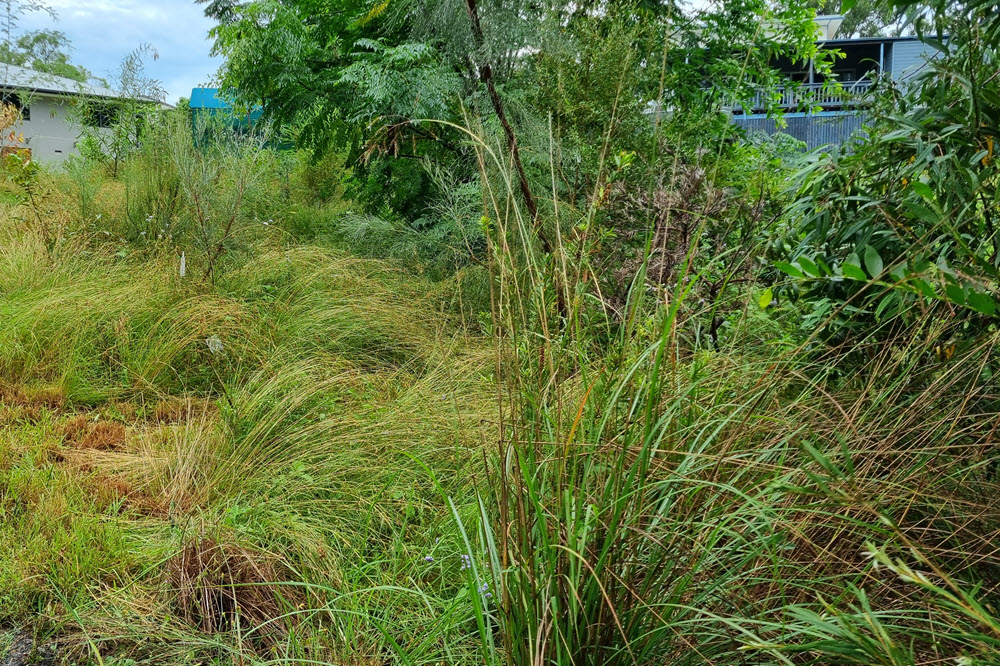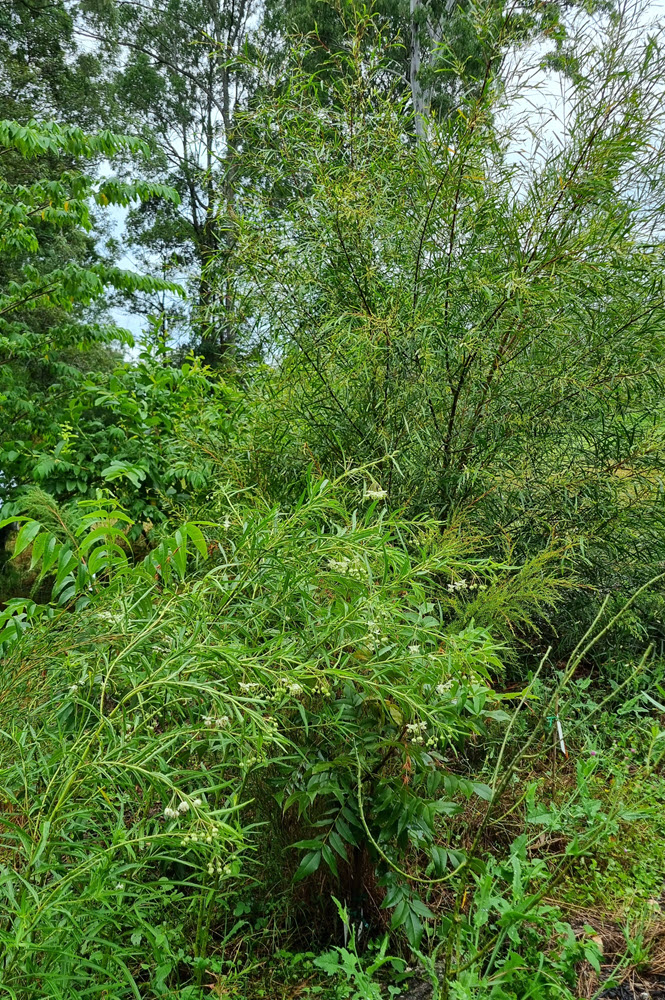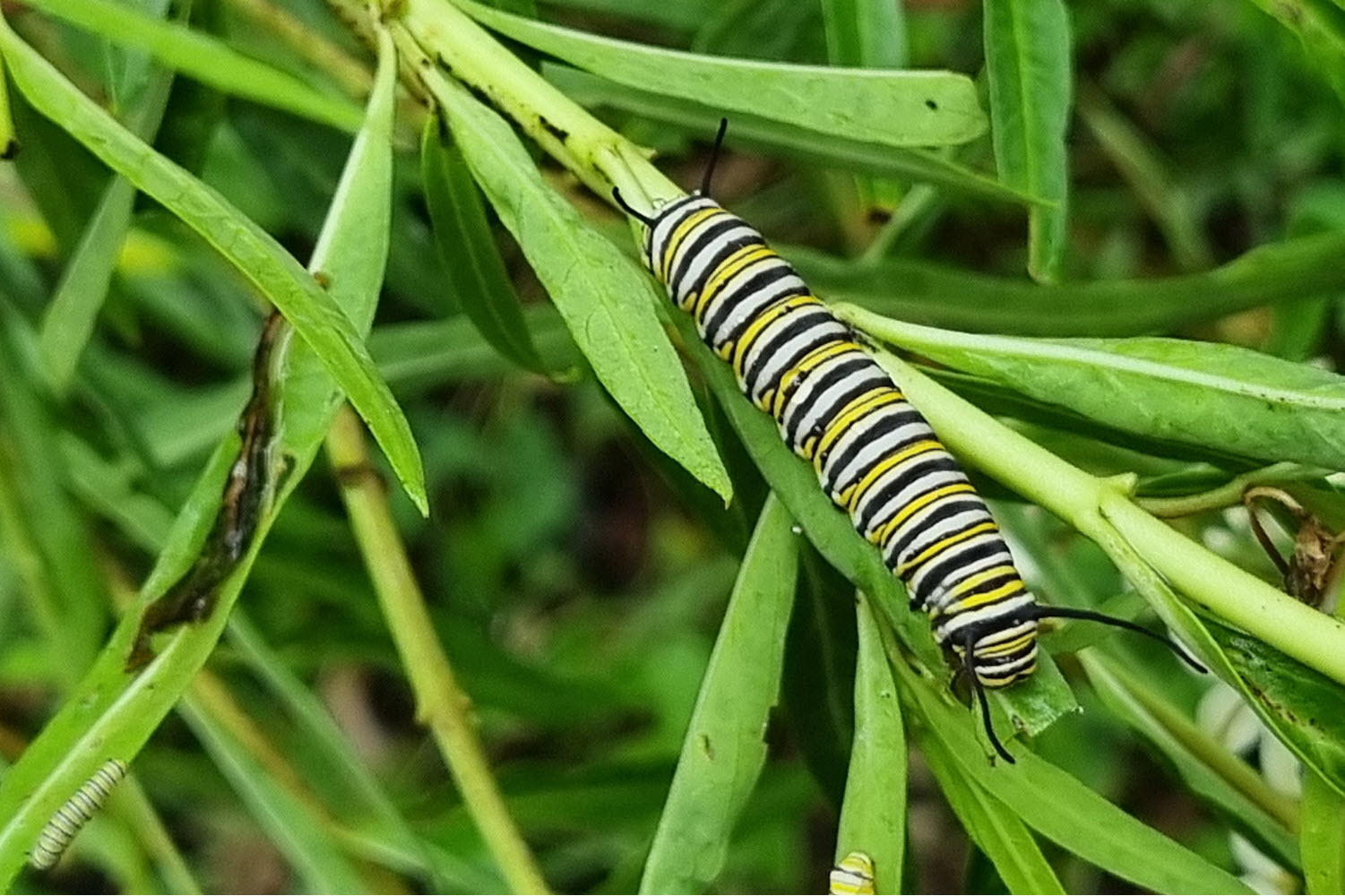The sudden downpour just before the Open Wildlife Garden event wasn’t enough to keep the twenty six participants away. Luckily the rain eased and we were treated to a tour of John’s amazing garden. His ’no mow’ approach has transitioned former lawn into native grass meadows, which have become a haven for biodiversity and wildlife, complementing the adjacent bushland around his property.
John is the President of Backyards for Biodiversity SEQ. He discovered his love of nature growing up on a poultry and small crops farm in north Brisbane. He later worked at the original community nursery, ‘Save The Trees’ at Zillmere, where he found his calling. After gaining qualifications in horticulture, his career has included nursery management, park and recreation management, and ultimately environmental protection.
John and his wife moved from Buderim to their 1.5 acre property at Black Mountain in 2020. When they first moved, the garden consisted of large areas of mowed lawns and some standing vegetation including weed species such as camphor laurel. With John’s interests including native plant propagation and cultivation, fauna and bird watching and butterflies and invertebrates, he was keen to make his property more wildlife friendly. His property backs onto natural bushland and John has spent the last 3 1/2 years creating a biodiversity haven.
After cutting down the camphor laurels, John positioned the logs across the contours of the land. This helped prevent erosion and allowed mulch to accumulate. Over 1000 plants consisting of 660 different species have been planted. Acacia species such as longissima, oshanesii and bakeri are fast growing and provided quick cover. Areas of native grass like blady grass, kangaroo grass, lomandra, dianella and weeping grass were established. Breynias and a Pararistolochia praevenosa vine provide food for the local butterflies. Trees planted included pink bloodwood, Gympie messmate, lilly pillys and hakea. Melaleucas and leptospermon were planted along a fence as a wind break. A swamp mahogany and a Phaleria octandra were included to provide food and habitat for invertebrates.
Removing exotic grasses, which have a high flame height, and replacing them with natives has reduced the fire hazard on the property. Weed species, such as broad leaved paspalum, are dealt with by mulching with cardboard or newspaper and a thick layer of grass clippings and leaf litter.
These changes have resulted in a huge increase in wildlife species visiting the garden. John has seen long nosed bandicoots and bush rats, which both help the ecosystem by digging holes and turning over the soil. He has also installed a number of nest boxes which have become shelters for possums, gliders, antechinus and a variety of bird species. We saw many butterflies enjoying the habitat and some of the participants spotted various caterpillars.
It was a delight to wander in John’s garden and see how much he has achieved in three years, creating a sustainable and resilient garden that reflects the local environment and supports and encourages the native wildlife.
Vanessa Presling



